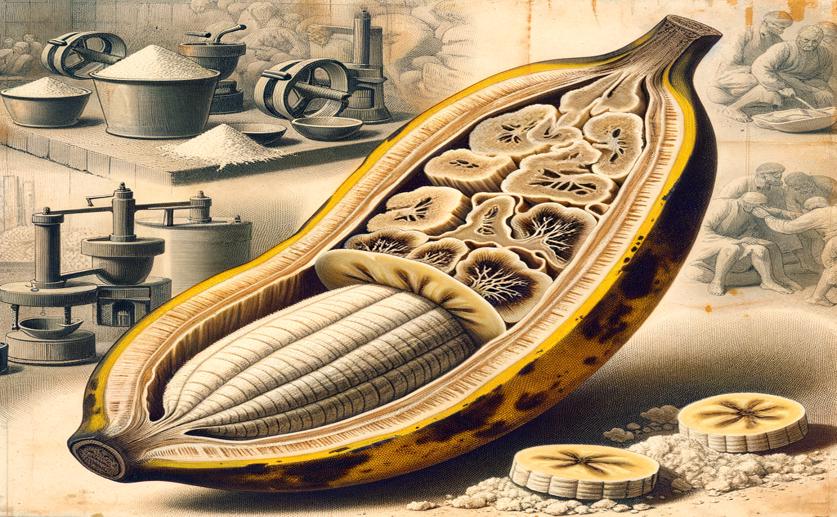
Why Unripe Banana Flour and Starch Are Harder to Break Down: A Quick Overview
Jenn Hoskins
17th August, 2024

Image Source: Natural Science News, 2024
Key Findings
- The study from the University of Mpumalanga found that unripe banana flour starch resists enzymatic breakdown, which can help regulate blood sugar levels
- This resistance is due to a complex interplay of factors including starch granule structure, amylose-amylopectin ratio, and non-starch components like proteins and phenolic compounds
- Different banana cultivars and processing methods affect the level of resistance, suggesting specific treatments can enhance the health benefits of unripe banana flour
References
Main Study
1) The multifactorial phenomenon of enzymatic hydrolysis resistance in unripe banana flour and its starch: A concise review.
Published 16th August, 2024
https://doi.org/10.1111/1750-3841.17270
Related Studies
2) Phenolics and essential mineral profile of organic acid pretreated unripe banana flour.
3) Phenolics and antioxidant properties of fruit pulp and cell wall fractions of postharvest banana (Musa acuminata Juss.) cultivars.
4) Soluble fibers from psyllium improve glycemic response and body weight among diabetes type 2 patients (randomized control trial).
Journal: Nutrition journal, Issue: Vol 15, Issue 1, Oct 2016



 27th July, 2024 | Jim Crocker
27th July, 2024 | Jim Crocker